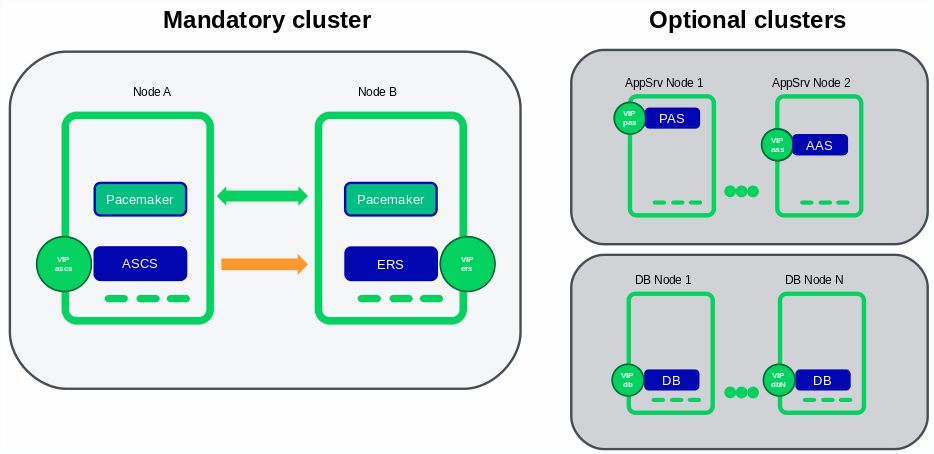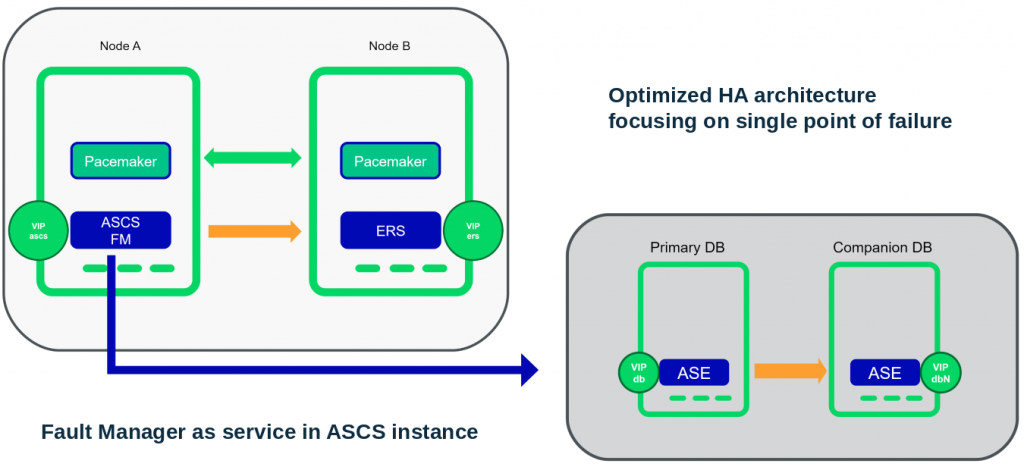
- SAP Community
- Products and Technology
- Technology
- Technology Blogs by SAP
- How AWS combined with the SUSE open source mindset...
Technology Blogs by SAP
Learn how to extend and personalize SAP applications. Follow the SAP technology blog for insights into SAP BTP, ABAP, SAP Analytics Cloud, SAP HANA, and more.
Turn on suggestions
Auto-suggest helps you quickly narrow down your search results by suggesting possible matches as you type.
Showing results for
berndschubert
Explorer
Options
- Subscribe to RSS Feed
- Mark as New
- Mark as Read
- Bookmark
- Subscribe
- Printer Friendly Page
- Report Inappropriate Content
10-24-2019
8:31 AM
Although this isn't a fairy tale, I'd still like to start a long time ago.
It's more than one year since we had a meeting with our partner AWS in the SAP Linux Lab. The purpose of this meeting was to address a request from AWS customers, who want to use Adaptive Server Enterprise (ASE) database replication with all its features in the AWS infrastructure, but without needing additional AWS instances. Is there something what we can use from the open source basket that SUSE has?
So what exactly does this mean?
The SAP ASE database has a built-in HA feature to replicate data between a primary and a companion database, which is actually quite similar to what many of you may know from SAP HANA. This SAP ASE replication uses the Fault Manager (FM) to monitor the replication between the primary and companion database and execute a take-over if necessary, e.g. a primary database failure. Now because the FM is monitoring the database replication, it must of course run somewhere outside of the database replication nodes to ensure the high-availability. Hence a 3rd node is required.
What we did!
We saw the advantages for our customers and said we were interested to work with AWS on such a solution. AWS started by preparing the infrastructure and then the SAP ASE team were involved and assisted in implementing the SAP ASE databases and the replication. During this project the FM was modified to support the new scenario for this deployment. So two of four parts were already done as we, SUSE continued the game. To make the scenario more relevant to SAP customers, a full SAP NetWeaver system was deployed and connected to the SAP ASE DB replication pair. AWS and SUSE now have a new joint paper for a SAP NetWeaver HA solution using SAP ASE:
https://documentation.suse.com/sbp/all/single-html/SAP_HA740_SetupGuide_AWS/

We used this Best Practice and set up a ASCS / ERS cluster. Now I mentioned above that the FM monitors the ASE DB replication, but who monitors the FM itself? What happens if the FM fails? Well, if the FM isn't available then there is no monitoring and no replication take-over. So what if we could use the existing cluster for ASCS and ERS and implement the FM into that solution too? This turned out to be a great idea since this not only fulfilled the requirement to install the FM outside of the ASE DB hosts. It also meant the SUSE HA cluster could monitor the FM. This making the FM itself HA.
As it turns out this way was all quite easy to do. The flexibility of pacemaker and our sap-suse-cluster-connector gave us the option to add the FM as a new service. The FM now runs and is monitored in a similar way as when we made ASCS and ERS processes highly-available. When the FM first fails, the saphostagent tries to restart the failed FM (sybdbfm) process, but after some retries it gives up.
With the cluster implementation we close this gap and pacemaker takes care and does everything which is necessary to get the FM instance up and running again.

We have documented this advantage as an additional chapter in the AWS SAP NetWeaver HA Guide:
https://documentation.suse.com/sbp/all/single-html/SAP_HA740_SetupGuide_AWS/#_additional_implementat...
Done, four of four parts 🙂
So in summary your key take-aways should be:
- SUSE HA to protection your ASE DB replication
- joint cooperation between AWS, SAP and SUSE
- opensource product with flexibility and enterprise support
- you request, we adapt, you succeed
This is Manas (AWS), Burkhard and Wajeehuddin (SAP ASE team) and Bernd (SUSE) from the SAP LinuxLab.
- SAP Managed Tags:
- SUSE Linux Enterprise Server,
- SAP NetWeaver Application Server,
- SAP ASE - HADR Enablement,
- Cloud
Labels:
You must be a registered user to add a comment. If you've already registered, sign in. Otherwise, register and sign in.
Labels in this area
-
ABAP CDS Views - CDC (Change Data Capture)
2 -
AI
1 -
Analyze Workload Data
1 -
BTP
1 -
Business and IT Integration
2 -
Business application stu
1 -
Business Technology Platform
1 -
Business Trends
1,658 -
Business Trends
91 -
CAP
1 -
cf
1 -
Cloud Foundry
1 -
Confluent
1 -
Customer COE Basics and Fundamentals
1 -
Customer COE Latest and Greatest
3 -
Customer Data Browser app
1 -
Data Analysis Tool
1 -
data migration
1 -
data transfer
1 -
Datasphere
2 -
Event Information
1,400 -
Event Information
66 -
Expert
1 -
Expert Insights
177 -
Expert Insights
293 -
General
1 -
Google cloud
1 -
Google Next'24
1 -
Kafka
1 -
Life at SAP
780 -
Life at SAP
12 -
Migrate your Data App
1 -
MTA
1 -
Network Performance Analysis
1 -
NodeJS
1 -
PDF
1 -
POC
1 -
Product Updates
4,577 -
Product Updates
340 -
Replication Flow
1 -
RisewithSAP
1 -
SAP BTP
1 -
SAP BTP Cloud Foundry
1 -
SAP Cloud ALM
1 -
SAP Cloud Application Programming Model
1 -
SAP Datasphere
2 -
SAP S4HANA Cloud
1 -
SAP S4HANA Migration Cockpit
1 -
Technology Updates
6,873 -
Technology Updates
416 -
Workload Fluctuations
1
Related Content
- Continuous Improvement Culture: Fostering BPM Innovation in Technology Blogs by SAP
- 10+ ways to reshape your SAP landscape with SAP Business Technology Platform – Blog Series in Technology Blogs by SAP
- Rise with SAP and SAP BTP and Cloud foundry: The Future for SAP Consultants in Technology Q&A
- SAP Business Technology Platform: “Change Agent” or “Scale Agent” Part 2 – BTP Strategy in Technology Blogs by SAP
- From Signavio to S/4HANA: Integration of SAP Transformation Tools - Interview with Rouven Morato in Technology Blogs by Members
Top kudoed authors
| User | Count |
|---|---|
| 31 | |
| 24 | |
| 8 | |
| 7 | |
| 7 | |
| 6 | |
| 6 | |
| 5 | |
| 5 | |
| 4 |